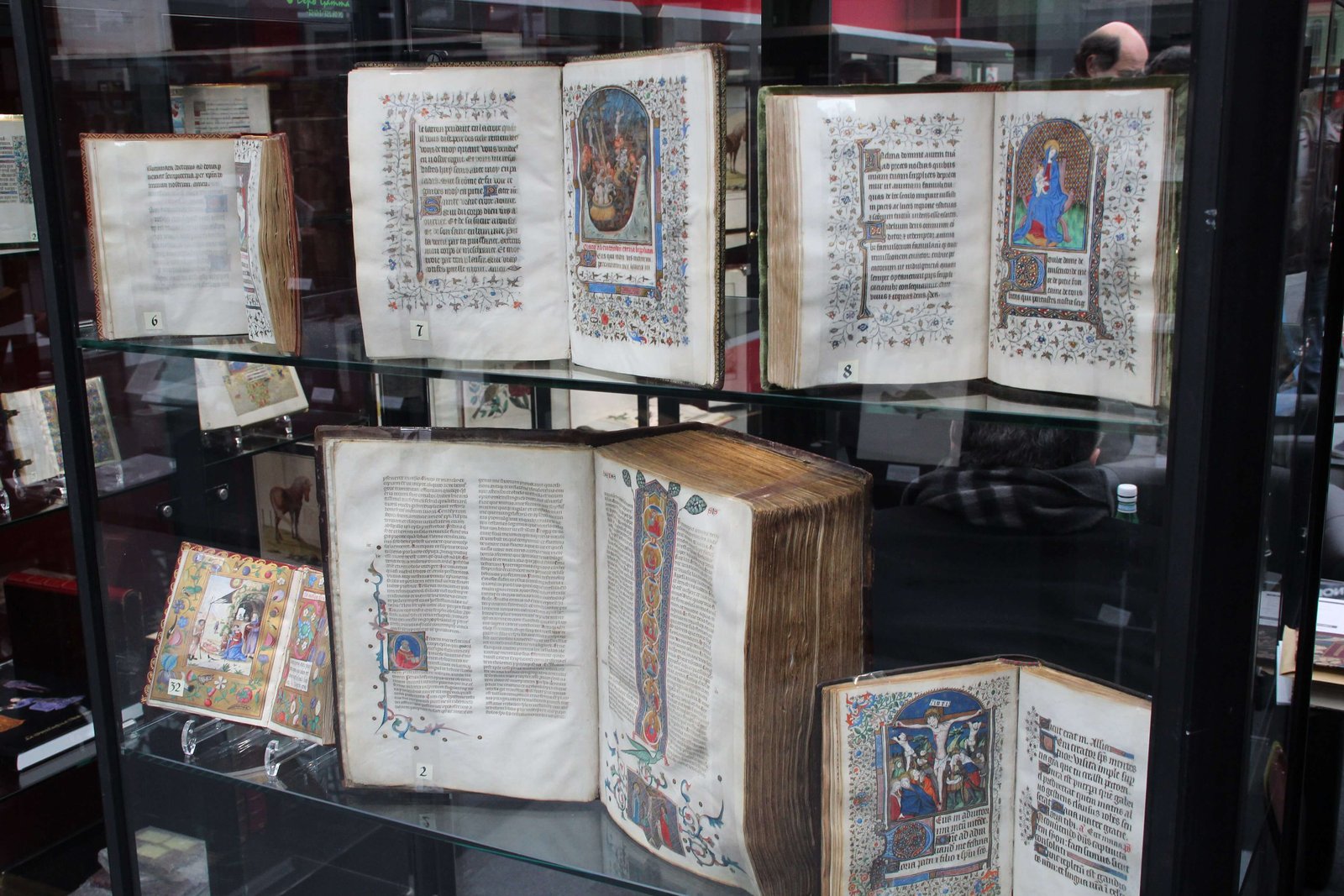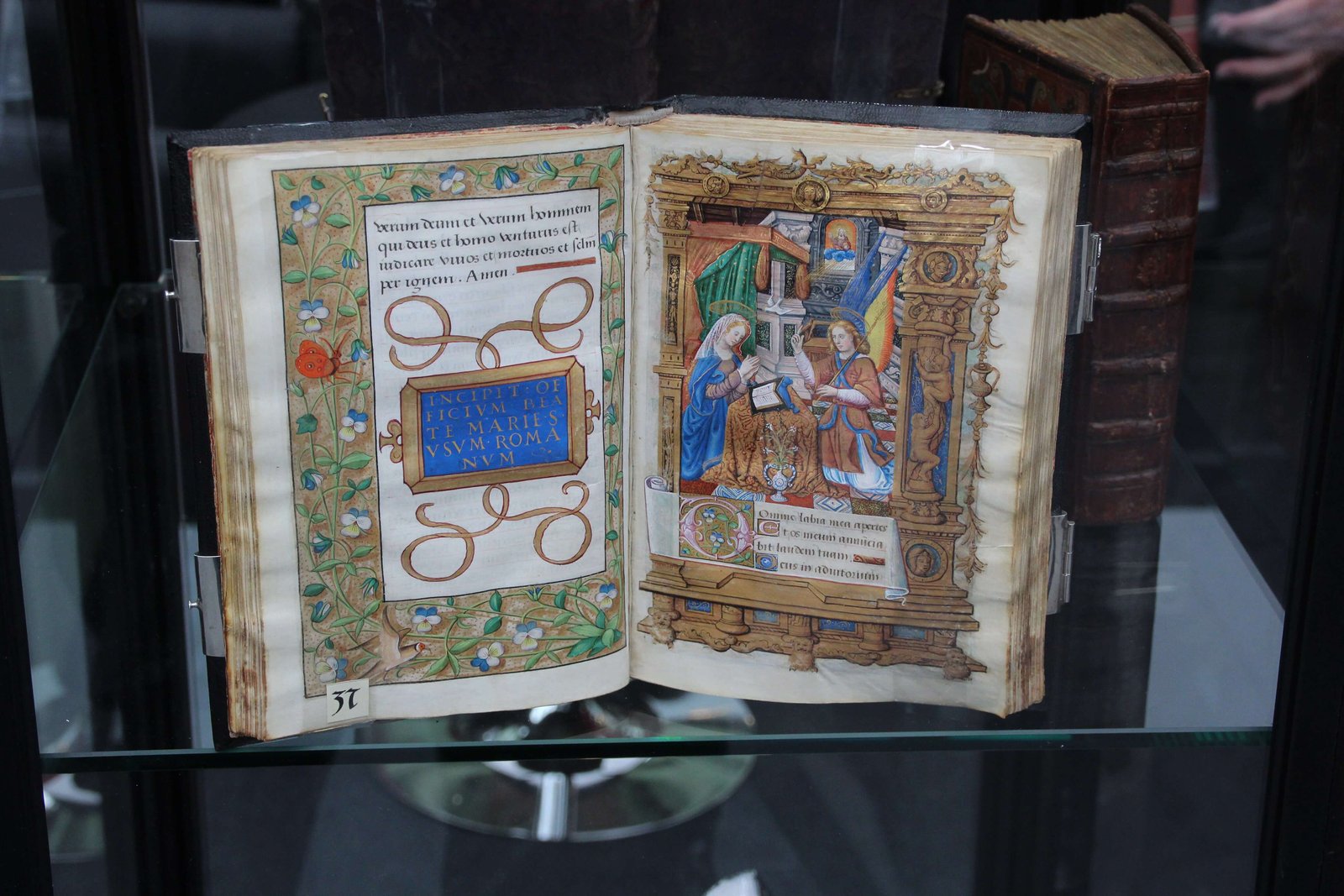
Last week, I attended the New York Antiquarian Book Fair. This is a really cool show that most people pay to visit, but I actually got paid to be there because of my work. One of the things I appreciated most was visiting several booths displaying medieval illuminated manuscripts for sale. What was particularly nice was that I got a much closer look at the manuscripts than I would be able to in a museum. I was able to see them in greater detail and even touch one of them, which would never happen in a museum. I love medieval illuminated manuscripts, and having the leisure to enjoy them in this way allowed me to appreciate how their greatest qualities are much more powerful when viewed in person. (The photos in this post depict different manuscripts from a different show. However, you can see some of what I saw on the website of top manuscripts dealer Les Enluminures.)
First of all, the manuscripts’ vibrant colors attracted me from several booths away. In manuscripts and in other art forms, medieval artists didn’t go for pale colors. Rich blues and reds predominate, and there’s a lot of gold leaf, too. These colors contrast beautifully with the whitish manuscript pages.

I also got a strong reminder of how small most medieval manuscripts are, since most photographic reproductions (like those in this post) are enlarged. Some manuscripts are so tiny that it’s difficult to imagine how people could actually read them, never mind create them! Their perfection is even more striking when you fully grasp how tiny they can be. Yet, they’re full of bold little details that are best appreciated by spending some time with them in person. Among my favorites was a border of tiny, blue-and-gold leaves. While some of the manuscripts at the fair had illustrations and historiated initials (large letters with scenes painted inside them), many had simpler decoration. I actually enjoyed these simpler manuscripts more than I did those with big illustrations, since I got the opportunity to pay attention to the little details that I would have overlooked in manuscripts with more show-stopping features.
But I enjoyed the more heavily decorated manuscripts, too, particularly gorgeous set of illustrated law books. Like the smaller details, these illustrations are best appreciated face-to-face. They seem to be condensed into their most essential elements, so they are easy to identify and comprehend at a brief glance. It’s only in person and viewed at their true (still pretty small) scale that everything comes together to form a striking whole.
I really enjoyed the opportunity to get up close and personal with some medieval illuminated manuscripts. I was able to appreciate so much that I’m not able to even the highest resolution photograph. I help everybody has the opportunity to spend time looking at beautiful manuscripts in person some time soon.


